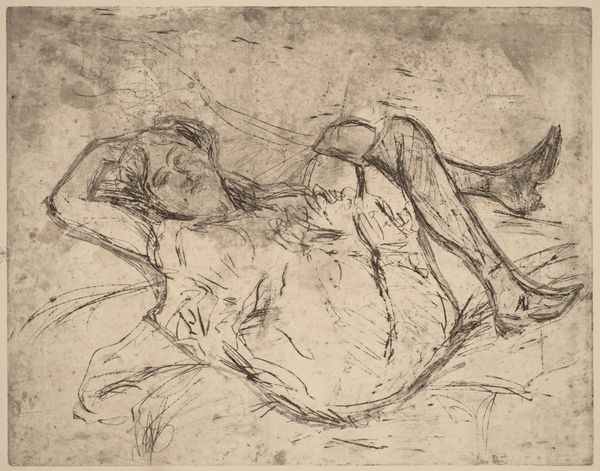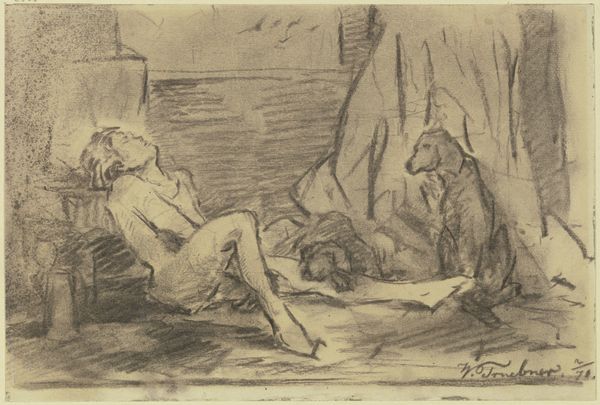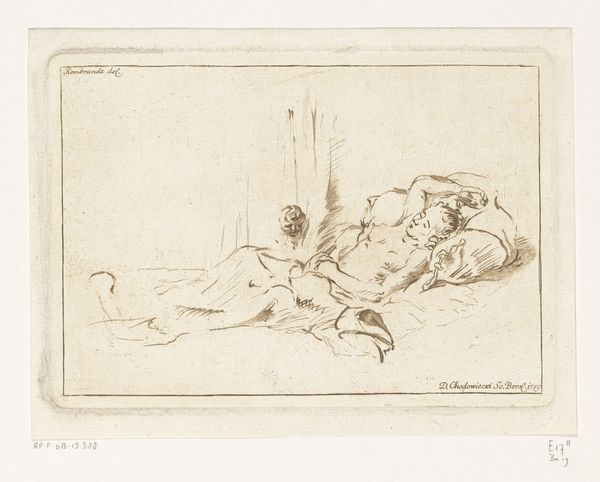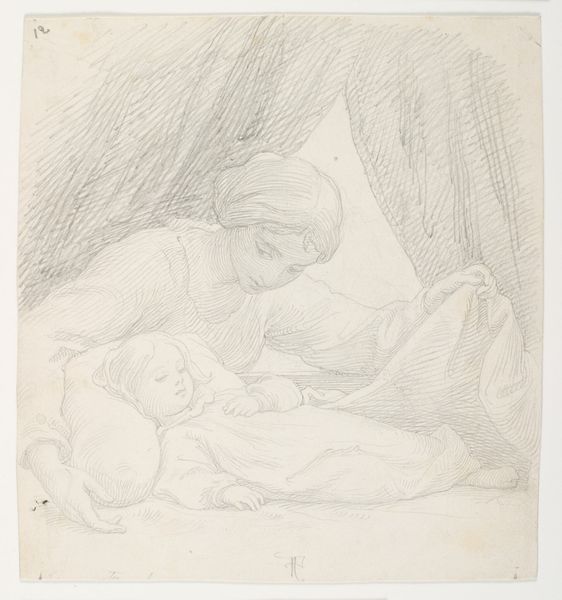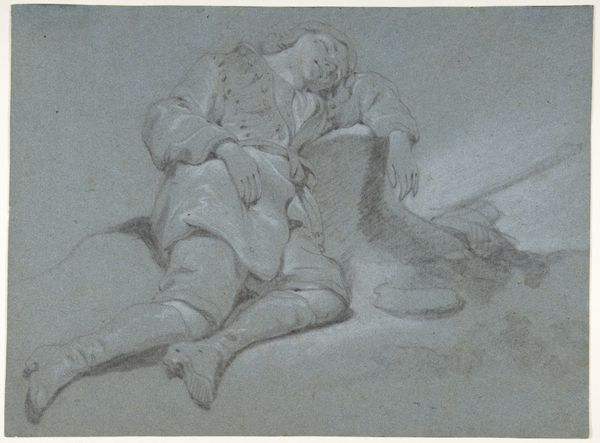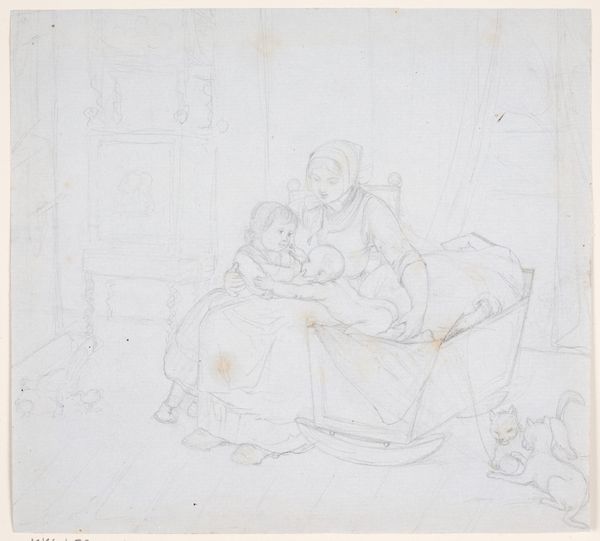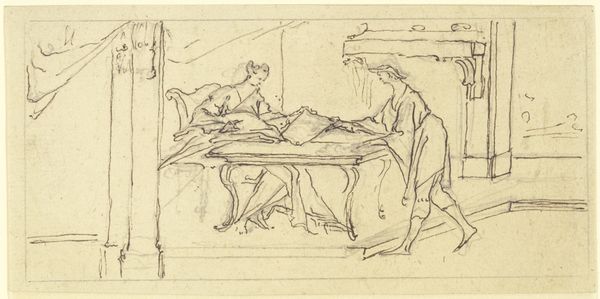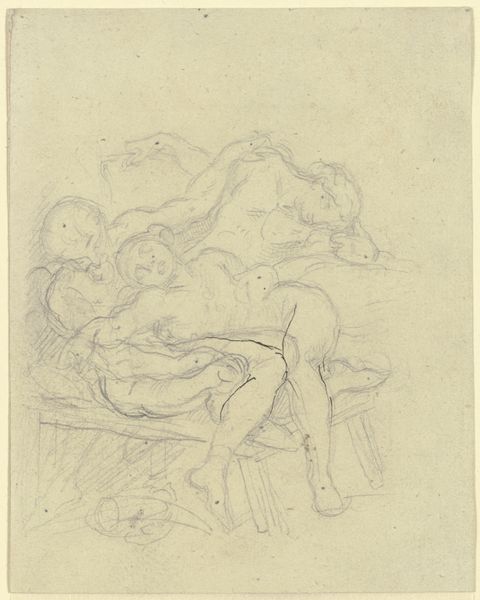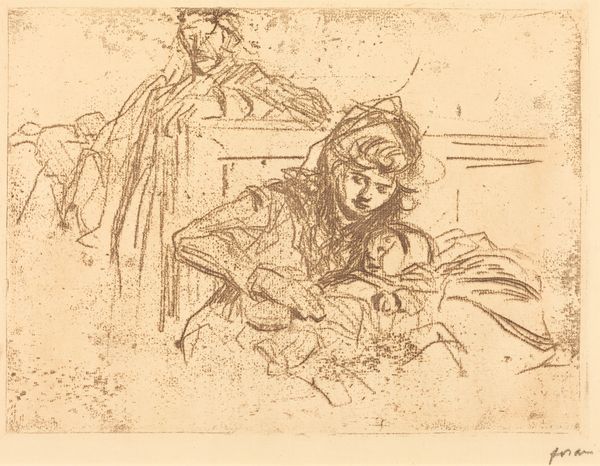
drawing, paper, pencil
#
drawing
#
16_19th-century
#
narrative-art
#
paper
#
romanticism
#
pencil
#
genre-painting
#
history-painting
Copyright: Public Domain
Curator: What strikes me first about this pencil drawing, currently held at the Städel Museum, is the quiet melancholy that pervades it. Editor: Yes, there's a distinct feeling of sorrow, almost hopelessness. It's as if the artist captured a moment of profound grief. Can you tell me more about the work itself? Curator: Absolutely. This is an intriguing drawing attributed to Victor Müller titled "Der Tod am Bett einer Mutter, vor dem Bett ein Kind in der Wiege"—Death at a Mother's Bed, with a Child in a Cradle Before the Bed. Although we can't pinpoint its exact date, it's considered to be from the 19th century. Editor: The title is a stark summary. Given the timeframe and Müller’s other pieces, I wonder about the social commentary at play here. The scene, of death and new life juxtaposed in poverty is palpable, reflecting class inequalities in mortality during the 19th century. Curator: Precisely. Müller's social consciousness often seeped into his works, and one could read this as a somber reflection on motherhood, mortality, and societal factors impacting family life during this era, as reflected by its romanticism. It also participates in both genre and history painting styles. Editor: The sketched nature lends it an immediacy. It almost feels voyeuristic. What truly unnerves is that we don’t know who the dying mother is. Her identity has been stripped to become just another anonymous sufferer in this world. There's a potent symbolism there. How can we understand this from a museum-historical perspective? Curator: Well, museums themselves play a role in shaping this. By acquiring and presenting works like these, they implicitly frame the narrative of suffering. Museums become a place where social awareness gets staged, almost like a public confessional of societal ills. Editor: I see what you mean. It transforms the role of museums as a platform for national stories and myth making and asks of the public empathy towards others and themselves in the face of trauma and adversity. That is particularly thought provoking considering history painting at that time. Curator: I'm glad this piece opened our eyes in that respect. Thanks. Editor: Yes, agreed. These conversations, however hard, allow us to engage more consciously and critically with art. Thank you.
Comments
No comments
Be the first to comment and join the conversation on the ultimate creative platform.

